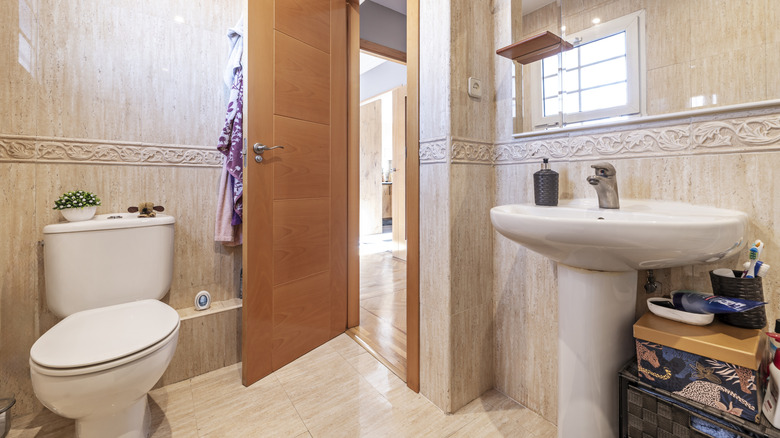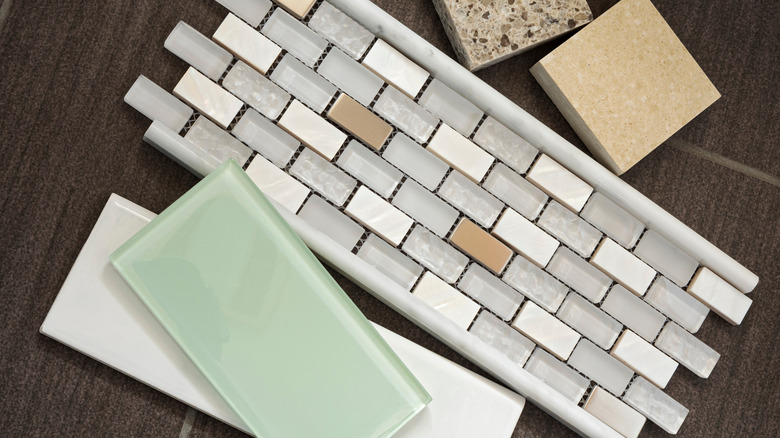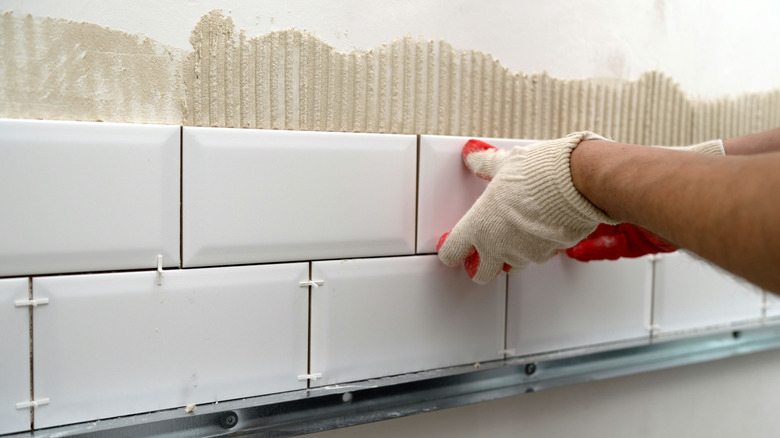Key Differences To Distinguish Between Bullnose And Beveled Tile
If you're looking to change the feel of your home, you don't have to shell out for massive renovations. Instead, relatively simple switches like adding or changing tile in your bathroom, kitchen, or other areas can provide a big transformation. Whenever you take on a new project, though, it's important to get up-to-date on the appropriate lingo. With tile, you may come across the terms bullnose and beveled, which refer to differences between edge shapes.
Without prior experience, tiling can be a tricky renovation to undertake because it requires a lot of precision. You don't have much room for error with your measurements. Regardless of the area you're tiling, you'll also have to navigate tricky spots like corners or transitions. This is where different edge types come into play, as they give you options for achieving a variety of looks. For example, if you're into contemporary designs' seamless finish, then beveling may be the preferred choice for you.
Sometimes referred to as mitred tiling or miter, beveling involves cutting specific angles into your tile's edge. Typically, it will be a 45-degree angle, although it can vary. This process removes the underside of your tile, which allows you to push two tiles closely together. Although some are concerned that beveling may increase the risk of your tiles chipping, others consider it the ideal method for achieving that seamless look. While this cut can be used on a variety of tiles, including natural stone, porcelain, and ceramic, you often achieve better results with the first two.
What about bullnose tiles?
If you want to achieve neat lines between your tile and other materials, like your wall, then bullnose tiles are another excellent choice. This refers to tiles with one or more rounded edges. This method actually gets its name from its appearance, as it is said to look like a bull's nose. There are three main shapes of bullnose tile available. Rectangular is the most common, but there is also square, which is a preferred cut for checkerboard patterns, and corner, which has two rounded edges. As the name implies, they're meant to be installed in corners.
In addition to their use along perimeters, bullnose tiles can be a fantastic way to add a decorative border or accents to your project. Although you can bullnose tiles yourself, you'll need some essential tools like a wet tile or circular saw with a diamond blade. You can also purchase bullnose tiles, but you should keep in mind that they will be more expensive than regular ones due to the additional time and labor required to cut these edges. Bullnose tiles may also add to your costs because they are more challenging to install. However, many consider that cost worth it as they can really pull a project together. However, if you buy bullnose tiles from a manufacturer simultaneously with regular ones, you should request a sample of both to compare. Bullnose tiles may have been produced at a different time, which can impact their finish.
Other edge options for your tile project
Just as you can choose from a wide range of tiles, you can select from a breadth of options for your edges. When it comes to beveling, alternatives largely depend on the angle of your cut. If it is more than 90 degrees, you open up a world of possibilities, as you can use tile edge trim, ceramic corner pieces, and or even overlap tiles. You can also look into other methods like using caulk. It is one of the cheapest and easiest methods available for finishing your tile project, and it's an excellent choice for areas like showers as it makes a waterproof seal.
For bullnose tile specifically, one common alternative is using Schluter trim. This metal edging is typically made from aluminum or stainless steel. It is often more durable and easier to deal with than bullnose tiles. One of the fun benefits of using metal for your edge is that you can better match it to your hardware, like cabinet handles or faucets. This may offer your room a more cohesive look. To install Schluter trim on your own, all you need are basic tools like a hacksaw, measuring tape, hammer, marker, level, and adhesive. You can also use tile trim pieces like pencil tiles and liner tiles. Both of these are thin pieces that can also give your project a clean border. The main difference is that pencil tiles are rounded while liner tiles are flat, which are ideal for flooring.


